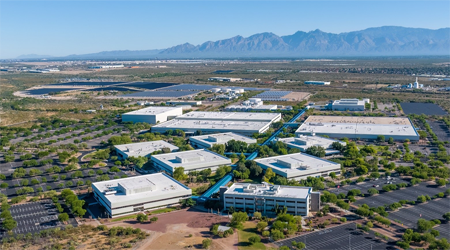
Why tech transfer is a great investment
There are six primary reasons why UAVC decided to invest in tech transfer opportunities:
- Innovation Potential: Tech transfer ventures often originate from laboratories and research groups where groundbreaking innovations are developed utilizing unique resources. For example, at the UArizona, researchers have access to an Anechoic Chamber. This non-reflective, echo-free room is called an anechoic (a-nih-KOH-ik) chamber. The chamber is built with radio-wave-absorbing material applied to the walls, ceiling, and floor. The absorptive material – a carbon-filled foam – is designed to keep sound waves from bouncing. The anechoic chamber conditions allow researchers to test satellite antennae for their command, control, and data relay performance. The intellectual property that can be created in these environments can only be replicated in a handful of places in the world.
- Intellectual Property Assets: Tech transfer startups typically possess strong intellectual property portfolios, including patents, copyrights, trademarks, and trade secrets. These assets protect the company’s innovations and serve as valuable collateral for securing future funding rounds and strategic partnerships, enhancing the venture’s overall valuation. At UAVC, we judge an opportunity based on the defensibility of these assets and leverage this toward an acquisition.
- Market Opportunity: Many tech transfer ventures target untapped or underserved markets with high growth potential. By investing in these startups, we can capitalize on emerging trends, gain early access to lucrative market segments, and position ourselves for substantial returns as the ventures scale and capture market share. A University will invest heavily in an industry before the private market has an incentive to do so. This is also supported heavily by non-dilutive grants and other alternative funding sources.
- Diversification Strategy: Investing in tech transfer allows UAVC to diversify its investment portfolios across different industries, technologies, and stages of development. Utilizing domain experts, we can validate the potential of a disruptive technology without committing our entire fund to be based solely on our past experiences. This diversification helps mitigate risks associated with individual investments while maximizing the potential for portfolio growth and long-term profitability.
- Access to Talent and Expertise: Tech transfer ventures often attract top-tier talent, including seasoned researchers, scientists, and entrepreneurs with specialized knowledge and expertise in their respective fields. Investing in these startups gives us access to a pool of skilled professionals capable of driving innovation, executing strategic initiatives, and navigating complex challenges. For example, at UArizona, the optical science professionals developing technologies are recruited worldwide and take on subjects that are not even offered at 95% of universities.
- Social and Environmental Impact: Many tech transfer ventures focus on solving pressing societal and environmental challenges, such as healthcare, clean energy, sustainable agriculture, and climate change. Investing in these ventures allows UAVC to support mission-driven initiatives while generating positive social and environmental outcomes, aligning with the growing demand for impact investing. We operate at the intersection of profit and impact. We constantly see innovations that can save lives, improve society, and make our community safer. By providing risk capital to these innovations, we can do well by doing good and change the world for the better.
According to the NSF, institutions of higher education in the United States will spend $90+ billion in R&D in a fiscal year across 236.1 million sq. feet of specialized research space. Given these institutions’ investment, it’s only right for these brilliant inventions to find a way into our daily lives. At UAVC, we believe in this potential and pledge our support to bring the best of the best off campus and into the world.


